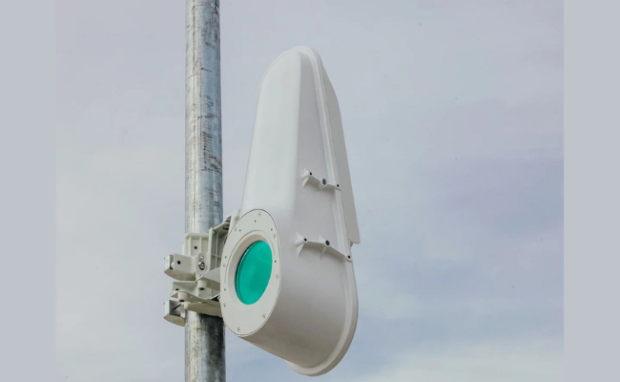NASA laser comms test succeeds ‘first light’
NASA’s laser communications test succeeds in its first trial or “first light.” On November 14, 2023, NASA’s Deep Space Optical Communications (DSOC) experiment beamed test data 10 million miles from Earth. The information traveled from the Psyche spacecraft to the Hale Telescope at Caltech’s Palomar Observatory.
This laser communications technology can help astronauts send data to each other faster, enabling them to undergo larger exploration missions. Also, that could make it easier to send research data to the Earth, improving space research. More importantly, we might repurpose NASA’s project as a new form of internet connectivity.
This article will elaborate on how NASA’s laser comms system works. Next, I will show other laser internet projects to show how far this technology progressed.
How does the NASA laser comms work?
On November 14, the deep space communications system achieved “first light” after its flight laser transceiver locked onto the Optical Communications Telescope Laboratory’s uplink laser beacon. The latter helped the transceiver beam its laser back to Palomar as automated systems and ground stations adjusted its pointing.
Also, the Deep Space Optical Communications system sent test data using its uplink and downlink lasers simultaneously. NASA calls this procedure “closing the link,” which is the primary objective of the experiment.
“Tuesday morning’s test was the first to fully incorporate the ground assets and flight transceiver, requiring the DSOC and Psyche operations teams to work in tandem,” said Meera Srinivasan, DSOC operations lead for DSOC.
“It was a formidable challenge, and we have a lot more work to do, but for a short time, we were able to transmit, receive, and decode some data,” she added. Moreover, NASA’s JPT compared its latest experiment with the previous version.
“Achieving first light is one of many critical DSOC milestones in the coming months, paving the way toward higher-data-rate communications capable of sending scientific information, high-definition imagery, and streaming video in support of humanity’s next giant leap: sending humans to Mars,” said Trudy Kortes, director of Technology Demonstrations.
You may also like: World’s most powerful X-ray laser fired recently
The DSOC team will improve the laser comms system following its successful first light. It will refine the systems that point the downlink laser on the space transceiver.
Then, the team will test maintaining a high-bandwidth data transmission at various distances from Earth. As a result, it will prove data transmission 10 to 100 times faster than existing space radio frequency systems.
The new system will also enable ground stations to receive more data. Soon, the system could help upcoming human and robotic exploration missions.
Other laser communications projects

NASA has another laser comms project, the Laser Communications Relay Demonstration (LCRD). The space agency will send the Integrated LCRD Low Earth Orbit User Modern and Amplifier Terminal (ILLUMA-T) to the ISS.
Then, NASA’s Space Communications and Navigation (SCaN) program will conduct the demonstration from the International Space Station. ILLUMA-T and LCRD will use invisible infrared light to send and receive information at higher data rates than previous space comms.
Once it succeeds, NASA can send more images and videos of its space missions to Earth. Specifically, it will benefit expeditions within low orbit distances.
Matt Magsamen, deputy project manager for ILLUMA-T, stated, “Once ILLUMA-T is on the space station, the terminal will send high-resolution data, including pictures and videos, to LCRD at a rate of 1.2 gigabits-per-second.”
“Then, the data will be sent from LCRD to ground stations in Hawaii and California. This demonstration will show how laser communication can benefit missions in low Earth orbit.”
You may also like: Scientists create supercharged lasers
Google’s parent company, Alphabet, has an innovation hub named X-lab that is developing laser internet. It launched Project Taara to use light beams to transmit and receive data instead of installing fiber-optic cables.
General Manager Mahesh Krishnaswamy told Euronews, “This is as simple as a digital camera with a laser pointer.” A transmitter fires a laser containing data to the receiver’s “camera” so the latter can decode and turn them into bytes.
The experiment aims to provide internet connectivity to areas that cannot accommodate conventional cable stations. Project Taara works in forested regions, railway tracks, bodies of water, and other areas cable internet can’t reach.
Conclusion
NASA succeeded in testing its Deep Space Optical Communications (DSOC) experiment. It was able to send data from space to the Earth and back simultaneously.
Director of Technology Demonstrations Trudy Kortes said it will facilitate sending people to Mars. Soon, the NASA laser comms project could lead us closer to that goal.
Learn more about the laser internet project on NASA’s Jet Propulsion Laboratory website. Also, check out more digital tips and trends at Inquirer Tech.